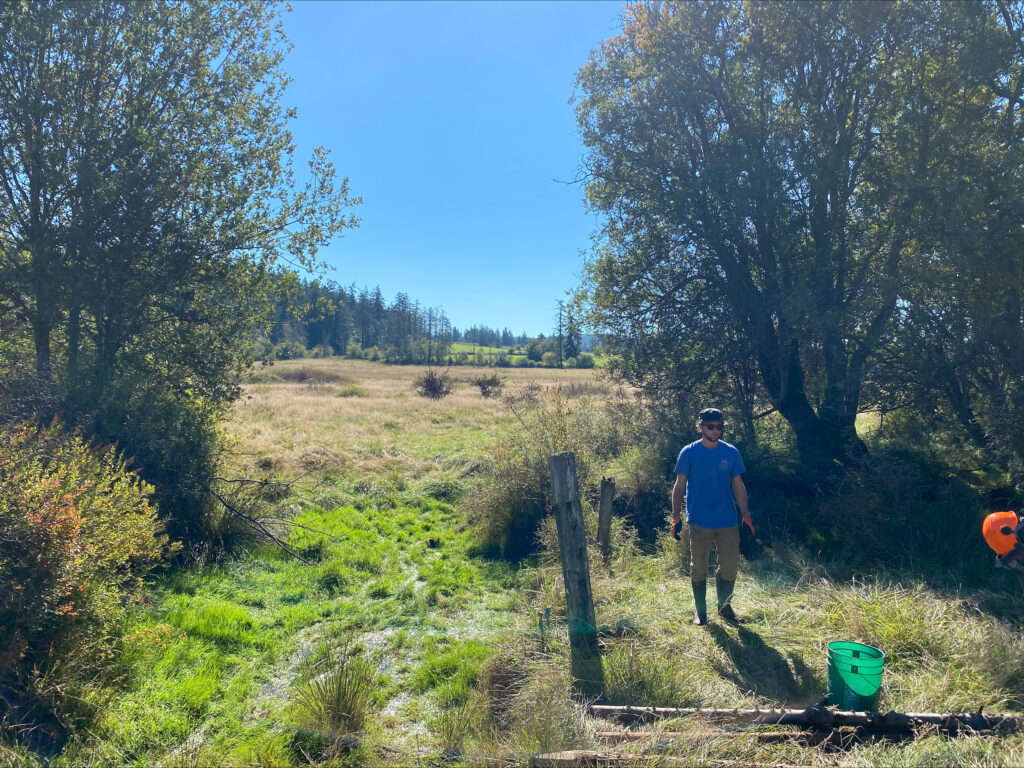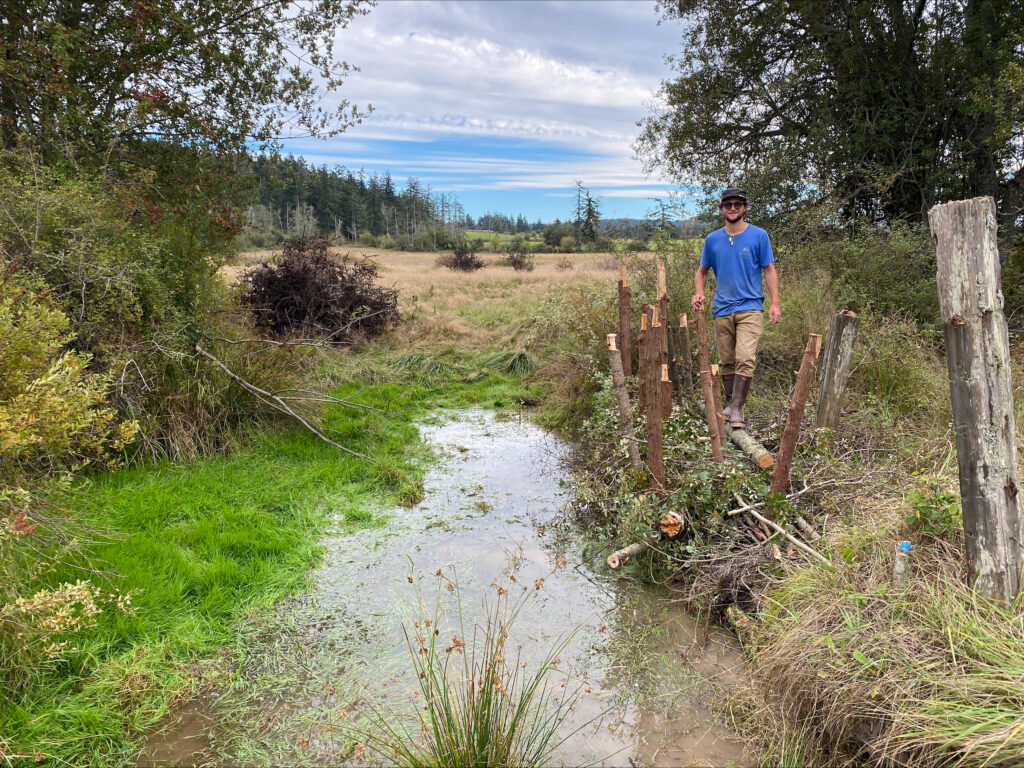The San Juan Preservation Trust and Conservation District’s Islands Conservation Corps (ICC) were hard at work last month to create a man-made beaver habitat, with hopes that beavers will take notice and eventually move in. But why beavers?
Not only are beavers a keystone species and expert wetland habitat engineers, but they also mitigate wildfire potential by creating dams that retain rainfall throughout the dry seasons. They are often absent these days in areas where they historically lived, due to hunting, lethal entrapment, development, and other factors. But that makes their effects on the landscapes where they still reside more noticeable, with environments around beaver dams often having more biodiversity.
The presence of scattered remaining beavers across the archipelago—including on Orcas Island—is what prompted the Preservation Trust to protect and restore waterways that could support them. One way of doing that is to create two features that they appreciate: deeper water pools for protection from predators, and adequate food through willow plantings. Since the mid-19th century, many of these areas in the islands have been altered by deforestation, livestock grazing, channelization, and draining, leading to reduced water flows, higher temperatures, excess nutrients, and loss of instream habitat.
This September, SJPT staff partnered with the Islands Conservation Corps to install seven beaver dam analogs (BDAs) along Crow Valley Creek at JB Farm Preserve. This comes after more than 400 trees and shrubs were planted last February around the creek to jumpstart the riparian restoration.
These man-made structures were crafted from wooden posts, pounded into the creek bed, and woven together with organic material to slow down water flow, help it fan out to a wider area, and promote a meandering stream—all similar effects as beaver-made dams.
Now that the BDAs are in place, only time will tell if a wandering beaver moves in. Even if none appear, the dams will help to improve freshwater retention to support wetland species, create favorable habitat conditions for fish and amphibians, and help restore the flow of Crow Valley Creek closer to historic levels.

Above: A section of Crow Valley Creek before a BDA was installed.
Below: The same section of creek after the BDA was installed. Notice the higher water level!

